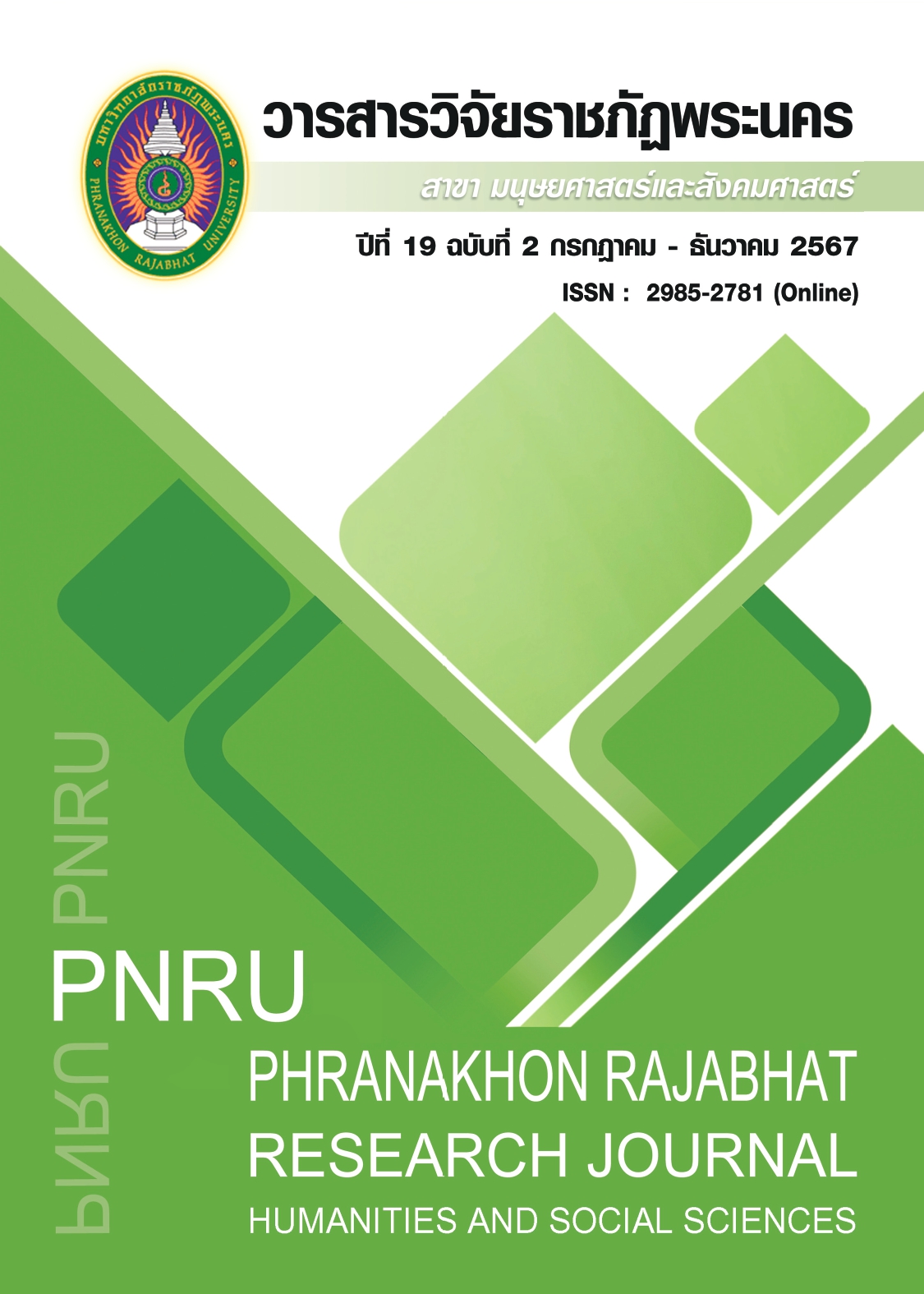A NEW USER-FRIENDLY TEXTBOOK ON CLASSIFIERS FOR LEARNERS OF FUNDAMENTAL JAPANESE
Main Article Content
Abstract
The objectives of this research were as follows: 1. To develop a classifier textbook for elementary Japanese learners, and 2. To study the opinions of elementary Japanese learners towards the activities and exercises created by the researcher. The sample group consisted of students enrolled in a Japanese language program. The participants were 40 students in the 4th grade at Thep-Leela School, divided into two groups: a control group comprising 20 students and an experimental group comprising 20 students. The data collection tools were a classifier textbook for elementary Japanese learners, a test on the use of classifiers for elementary Japanese language learners, and a student satisfaction questionnaire. The data analysis included calculating percentage, the mean, standard deviation, and Dependent t-test. The research found that the average score of the post-test on the use of classifiers for elementary Japanese language learners indicated that the experimental group's score was significantly higher than the control group's average score, at the 0.05 significance level. Regarding the opinions of elementary Japanese language learners towards the activities and textbooks created by the researcher, it was evident that overall satisfaction was at the highest level.
Article Details

This work is licensed under a Creative Commons Attribution-NonCommercial-NoDerivatives 4.0 International License.
Each publish articles were copyright by Phranakorn Rajabhat University
Any contents which appeared in each articles in the journal were authors personal opinion. It did not relate to Phranakorn Rajabhat University and other instructors in the university. Each authors would take responsibility on their articles. If there are any mistake, the authors will take responsibility themselves
References
Jindapan S. (2016). A comparative study of worldviews between Thai and Japanese Native Speakers from classifiers. (Master’s Thesis). Kasetsart University, Bangkok. (In Thai)
Hamano, H. (2008). A survey on the acquisition of classifiers by Japanese learners. Language culture and Japanese language education, 35, 49-52.
Iida, A. (1999). Meaning and usage of Japanese classifiers. (Doctoral Thesis). The University of Tokyo, Tokyo.
Jindapan S. (2016). A comparative study of worldviews between Thai and Japanese Native Speakers from classifiers. (Master’s Thesis). Kasetsart University, Bangkok. (In Thai)
Matsumoto, Y. (1991). The Semantic Structures and System of Japanese Classifiers. Gengo kenkyu (Journal of the Linguistic Society of Japan). Volume 1991 Issue 99. 13 – 75.
Polpanich N. (2008). A study of the usage of classifiers in Japanese of the native Thai learners: A case study of students majoring in Japanese language, department of foreign languages, Faculty of Humanities, Kasetsart University. (Master’s Thesis). Kasetsart University, Bangkok. (In Thai)
Phuwiphadawat S. (2001). Leaner Centeredness and Authentic Assessment. 2 Edition. Chiangmai: The Knowledge Center. (In Thai)
Sou, T. (2019). An Overview of Japanese Quantifiers and Quantitative Expressions: Towards Application to Japanese Language Education. Tokyo Gakugei Universuty. Journal of Educational Research, 40, 1-16.
The Japan Foundation. (2007). Kyokasho wo tsukurou. The Japan Foundation Japanese Language Institute Teaching Material Development Team, (Kyokasho wo tsukurou).
Thuwanon P. (2018). A Survey of Japanese textbook Development consistent with E-learning Behavior of Dhurakij Pundit University’s student. Journal of Business Administration and Languages (JBAL), 6(1), 1-7. (In Thai)
Wonglekha F. (7 February 2009). Textbook.: An important aid in developing student quality. Daily News newspaper. Page 4. (In Thai)


